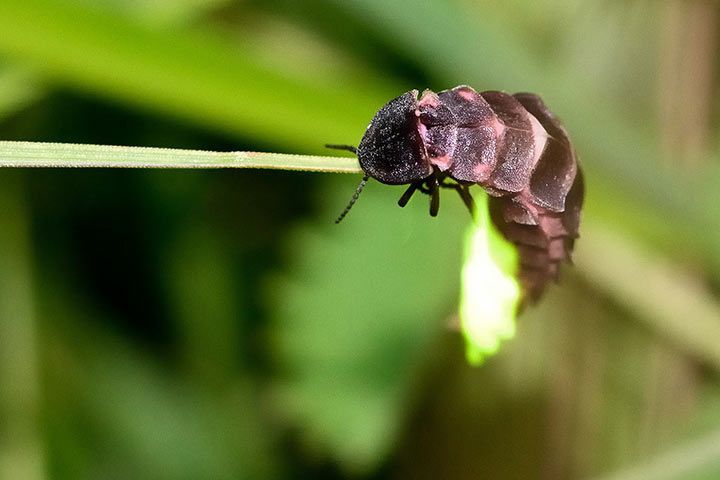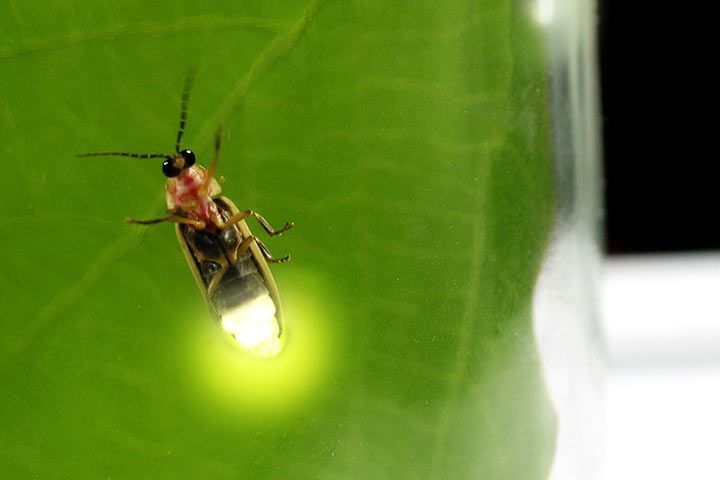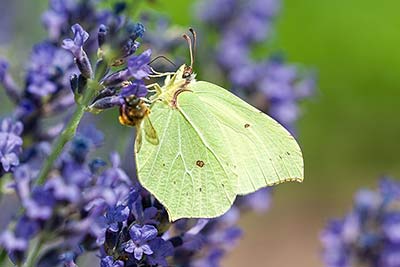Firefly
Firefly Facts
| Size | 0.47-0.78 in (12-20 mm) (female); 0.19-0.78 in (5-20 mm) (male) |
| Speed | Unknown |
| Weight | 0.0007 oz (0.2 g) |
| Lifespan | About 2 months |
| Food | Little insects/snails, pollen, nectar |
| Predators | Frogs, spiders, birds |
| Habitat | Worldwide (except Antarctic region) |
| Order | Beetles |
| Family | Fireflies |
| Scientific name | Lampyridae |
| Characteristics | Glows at night |
Main Characteristics
Fireflies are also called lightning bugs or glow worms. However, fireflies are no worms, they are classified as bugs.

Senses and Abilities
Why Do They Glow?
Most Fireflies are nocturnal animals, and of course they have to attract attention somehow when looking for a mating partner. While the ladies are climbing up plants or trees (because they cannot fly), the male fireflies hover about at a height of approximately three feet (one meter) and look out for them. The females start their “glow concert” and act just like flight controllers trying to wave the male fireflies nearer. Both females and males glow, yet the ladies shine much brighter. There also exist diurnal fireflies. They only glow faintly or not at all, for example in shady areas. During daytime nobody would perceive their light!
When Do They Glow?
Mostly during dry summer nights between 10 p.m. and 12 a.m. They hide at secure places when it’s raining.
How Do They Glow?
1,001 Ways to Glow! Fireflies shine in various ways and differ in:
- the color of their light
- how long they are glowing
- how often they light up
- the intervals between lighting up
- at what time at night they glow
What Makes Them Glow?
The term bioluminescence indicates the capability of creatures to generate light. It is based on the Latin verb “luminare”, which means “light up, illuminate”. Fireflies use chemical processes to generate energy in the form of light. The so-called luciferin (a natural substance for the generation of light) causes a chemical reaction together with an enzyme, a kind of energy component, and oxygen. By the way: The light can only be perceived at the lower back parts of the shell, because these are translucent.
Are They Hot When They Glow?
Maybe you've already imagined catching a firefly with your hand and carrying it around as a warming light. Just like a miniature light bulb. Haven’t you? You'd be surprised, because their light is rather cold. It doesn't contain any infrared or ultra-violet light.
They Are Perfect Lightbulbs
A normal (old) light bulb generates 97% heat and only 3% light. Fireflies can transform 95% of energy into light. There is no light source developed by humans for domestic use that can compete with the little bugs.

Enemies and Threats
Which enemies do fireflys have? Lizards, birds, frogs, and spiders love to feed on fireflies.
Reproduction
Adult fireflies have only a few weeks to live. They hardly eat anything during this time, because they are busy finding a mating partner. After a few weeks, little larvae hatch from their eggs. They remain in this stadium for up to three years and have a mighty appetite for little snails and insects. As soon as they have grown enough, they develop further and look for a partner to lay some eggs.
The Larvae Are Also Glowing
Yet, they don’t do this to attract mating partners as they are not mature enough for this. They signal their enemies: “I taste really bad” or “I am poisonous”. You would not appreciate glowing food on your plate either, wouldn’t you?













